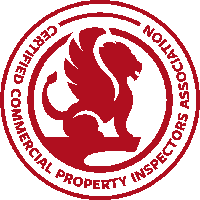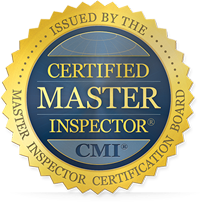How to Understand and Interpret Your Lab Report:
Mold is a natural presence in the air, but what we’re really interested in is any unusual activity happening inside your home as compared to outside. The outdoor environment sets the baseline for what’s normal indoors when using mold air-o-cell cassettes.
Let’s break down the lab report step by step:
We typically take 3 samples in a property. One outside and two inside. In the report below you will see the samples identified in the green columns as “outside”, “Inside – Kitchen”, and “Inside – Basement.”
Total Spores – Raw Count: The first thing to focus on is the “total spores – raw count.” We want the indoor samples to have a similar or lower raw count compared to the outdoor sample, as shown in the example report below. In this case, the outside sample shows 200 spores, while for the indoor samples, we see 28 and 20. The lab’s conclusion is marked in pink as “NOT ELEVATED.”

You may be wondering what the range of outside levels is more common. Below is a chart of Outside raw counts actually measured in Missoula & Ravalli Counties over the course of a year. They ranged from 20s to 400s. A majority of the measurements for outside readings are under 150 spores.

Different Mold Types: Various types of mold exist. We’re interested in comparing the mold types indoors versus outdoors. In the chart below, you’ll find a common example of mold types from a lab report. These will be the actual molds identified during the lab analysis.
What we are looking for from indoor samples are fungi that are considered to be indicators of water damage including, but not limited to; Chaetomium, Fusarium, Memnoniella, Stachybotrys, Scopulariopsis, and Ulocladium.

If the indoor vs. outdoor comparison shows similar raw counts and mold types, the report indicates no significant mold issue, or NOT ELEVATED”.
One last item to note. The lab report will also determine if there seems to be a problem or not by their added value comments:
Pink Conclusion Line: NOT ELEVATED – indicates no problem from these samples
Here is the lab’s interpretation guideline:
CONTROL: This is a baseline sample showing what the spore count and diversity are at the time of sampling. The control sample is usually collected outside of the structure being tested and used to determine if this sample(s) is similar in diversity and abundance to the inside samples.
ELEVATED: This means that the amount and or diversity of spores, as compared to the control sample vs. the other sample (s) are higher than expected. This can indicate that fungi have grown because of a water leak or water intrusion. Fungi that are considered to be indicators of water damage include, but are not limited to; Chaetomium, Fusarium, Memnoniella, Stachybotrys, Scopulariopsis, and Ulocladium.
NOT ELEVATED: This means that the amount and/or the diversity of spores, as compared to the control sample are lower than expected and may indicate no problematic fungal growth.
UNUSUAL: This means that the presence of current or former growth was observed in the analyzed sample. An abundance of spores are present, and/or growth structures including hyphae and or fruiting bodies are present and associated with one or more of the types of mold/fungi identified in the analyzed sample.
NORMAL: This means that no presence of current or former growth was observed in the analyzed sample. If spores are recorded they are normally what is in the air and have settled on the surfaces tested.
There are other items on the report itself but they are not as important to note unless there appears to be a non conclusive result or a positive result.
Remember, interpreting lab reports might seem daunting at first, but with these insights, you’ll be better equipped to understand whether there’s a mold concern in your home. This completes our 3 part blog series of discussions about mold in your home.





 Committed to Your Safety and Peace of Mind – Jennifer Thorne Testing Services Manager | IAC2 Certified for Mold & Radon | NRPP Certified: 113525-RMP, 113629-RMS | DEQ Meth Certified: MCP-0146-C
Committed to Your Safety and Peace of Mind – Jennifer Thorne Testing Services Manager | IAC2 Certified for Mold & Radon | NRPP Certified: 113525-RMP, 113629-RMS | DEQ Meth Certified: MCP-0146-C







